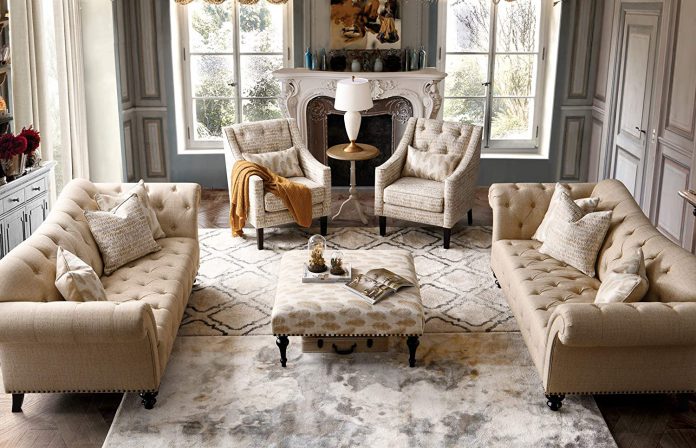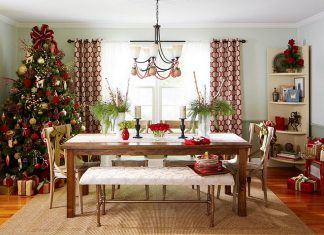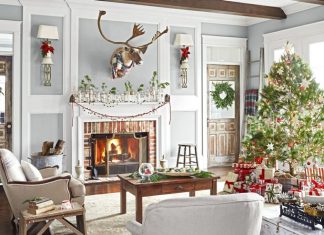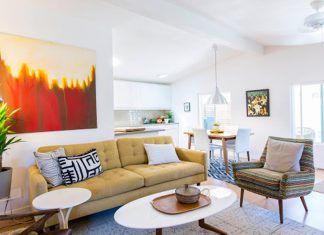Among some the most recognizable items of decor in the world is the Chesterfield Sofa. You can go to nearly every part of the world and you’re sure to find one, whether it’s in a hotel suite, an apartment, or a luxury restaurant. This style staple has progressed from the country clubs and historic buildings of the 19th century, to becoming a widely sought-after piece of decor, thanks to its luxurious leather, wide buttoning, and broad arms.
While there are no legal records to back up the claim, it is believed that the pattern for the Chesterfield was designed by Lord Philip Stanhope, the fourth Earl of Chesterfield, who gave the furniture its iconic title.
According the claims, the Earl needed a place where he and the other gentry could sit without causing creases in their coat and suits, so he commissioned a local carpenter to devise a fix. This commission resulted in the original model for the Chesterfield Sofa.
Lord Philip Stanhope was a well-known author and activist, as well as a member of the British aristocracy. He was also well-known as a trendsetter of his day, with many people looking to him for the most up-to-date fashions and designs, which could be why this design was replicated so much throughout the 19th century.
If you’re curious about how this first sofa became a global favorite, there’s a second tale about the Earl that shows how the movement started. Stanhope is said to have summoned his butler on his death bed and asked him to “bring Mr. Dayrolles a chair.” Solomon, an ambassador and supporter of the work, had it shipped to his house and placed on view for his guests. The sofa was much loved in its new home, to the point that many visitors had their own copies made. That’s how the Chesterfield made its way into the houses of the top crust of British society.
Prior to the nineteenth century, the utilitarian nature of furniture was still valued over the level of comfort it provided, although this began to change during the twentieth century. Sofas have been around since the 1690s in some way or the other, but it wasn’t until the Victorians reflected on how comfortable their chairs could be that we saw more contemporary elements introduced. It’s generally fair to say that the Earl’s Chesterfield sofa, or even the clones that preceded it, didn’t completely reflect the modern style that we know today. More luxury elements were introduced to the theme during the Victorian period, indeed.
Horsehair was used to fill earlier Chesterfields, and tufting was used to keep it stable. They didn’t have a suspension mechanism so the chairs must have been much stiffer and uncompromising to sit on in the 19th century. The early pieces’ buttoning was crafted of thicker fabric, which, along with the absence of friction, must have dug into the backs and limbs of anybody who stood on them for an extended period of time. According to one interpretation, the Earl’s hard-buttoned style was inspired by his need to have a sofa that prevented uninvited guests from patiently waiting for an engagement for far too much.
The deep-set buttoning that has become a characteristic of modern Chesterfields was not introduced until the Victorian period, when people were more concerned with warmth. Similarly, the patent for knotted springs used in sofa stability didn’t come until 1828, nine years before Queen Victoria inherited the crown. When these two additions were added, the sofa’s comfort improved by a factor of ten, ushering it into the cozy bits we’ve come to expect in recent era. The first descriptions of what may be called a modern Chesterfield didn’t exist until the mid-1800s at the lowest.
As the Chesterfield became much more common, it made its way into the households of many richer households, where there was a common practice of making sofas quilted in lavish velvet or leather to fit the grand décor around them. These two fabrics are still common today and have become synonymous with the classic Chesterfield look. Some gentleman’s associations in London, such as White’s (founded in 1693) and the Carlton Community (founded in 1832), adopted the sofas as a cozy place for the city’s most powerful men to relax and engage in conversation. Those certain clubs were important to the life of the rich and privileged, providing a venue for them to relax, dine, and socialize.
Chesterfield sofas were heavily displayed in both of these establishments, making them an obvious choice for interior decorators. Any of the clubs that are still open today can be visited to see their vintage furniture. The inclusion of initial Chesterfield bits attests to their popularity and long-term reliability. The Chesterfield, once a piece of decor only the rich could afford, has now a reputation that transcends class while retaining the iconic charm and prestigious air that its legacy has given. The Chesterfield sofa has been transformed into a series of styles as fashions have evolved, but the timeless look remains flexible and will fit with contemporary décor styles.













